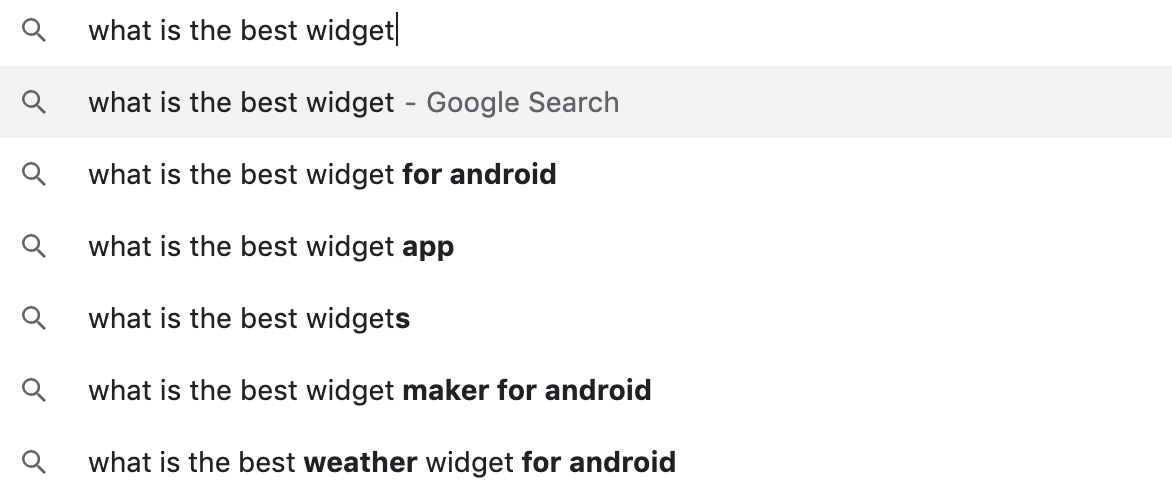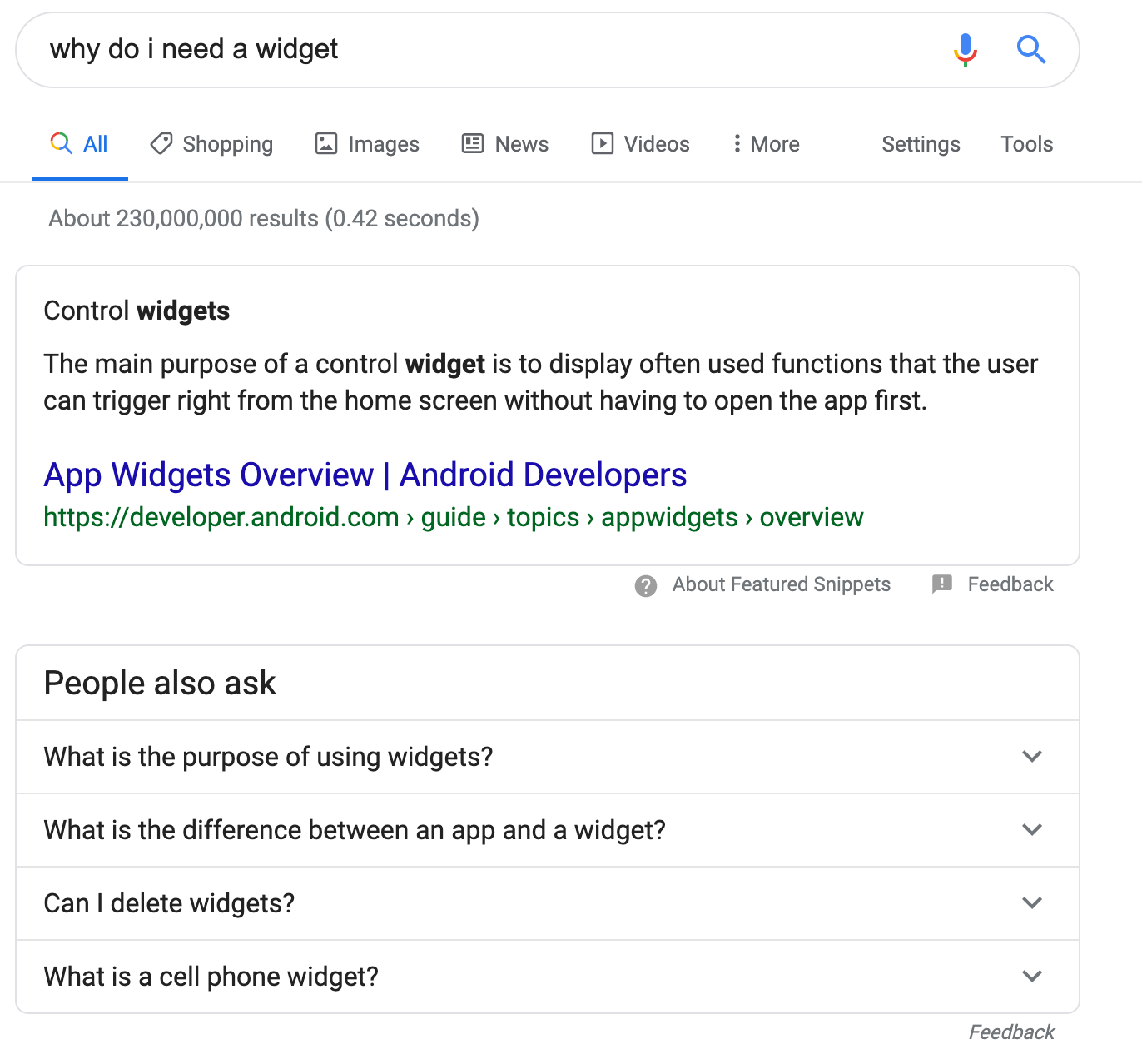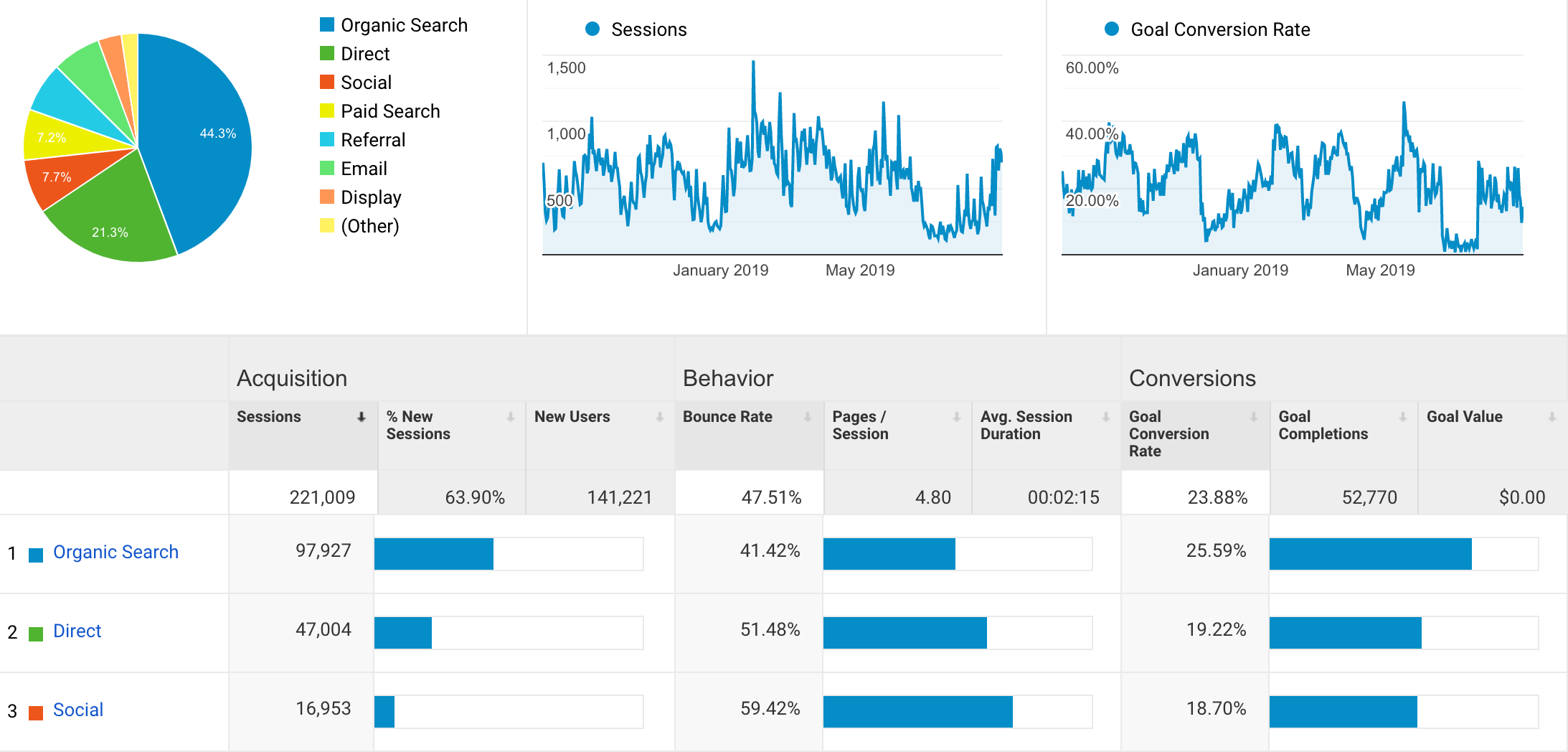How to use SEO for Lead Generation

In this post, we share how Mightybytes uses SEO for lead generation in tandem with content strategy and conversion rate optimization tactics to help our clients meet their business and marketing goals.
On average over the past year, our clients get 30-60% of their website traffic from organic searches. We look at that traffic as an opportunity to increase the number of qualified prospects who might convert into customers. Let’s explore how we use existing data to continuously improve SEO results.
SEO for Lead Generation Requires a Solid Foundation
First, your website needs several important components before you can effectively use SEO to generate leads. Otherwise, your efforts will fall flat. Here’s an SEO Foundation checklist we use to get the basics in place:
- Ensure pages load quickly. Make sure your pages load quickly across devices and platforms. This means optimizing images, code, and reducing server requests, among other things.
- Implement easy to understand content structure. Clear site navigation and hierarchical page structure help Google (and your users) find what they need.
- Make your site accessible for everyone. What’s good for website accessibility not only helps people with disabilities but is usually good for mobile indexing and overall user experience as well.
- Go local. 46% of all Google searches are seeking local information, so make sure you optimize contact pages, location pages, and other locally-relevant service or product pages. Secure business listings and optimize those profiles in your Google My Business account.
- Test and iterate content and keywords. Landing page metadata and content should contain industry and topic-relevant keywords that help both users and search engines better understand what your content is about. Learn more about keyword research in one of our other posts.
- Link to relevant pages. Include natural and relevant internal links to other pages when possible, but don’t overdo it.
Available & Discoverable Content
Once the foundation is in place, make your content available and discoverable when prospects are ready to have a sales conversation. To do this, you need to know your users. If you’re unsure what they search for, a persona exercise or some user research might help.
Being available means that when someone is specifically searching for you or information about your products or services, you show up in results. Patagonia certainly wants to show up if someone searches “patagonia stores” or “patagonia sales”. If someone is searching for your brand, company, or products by name, they may want to buy from you.
You are discoverable if you show up in search results when people are searching for things related to you or your products or services. For example, an IT consulting firm would want to show in searches when people search for “best IT security company” or “IT consulting services”. You want to be discoverable in these searches because these people may be interested in having a sales conversation with you.
Our team regularly facilitates SEO and digital marketing workshops to help clients better reach their goals.
Identify User Search Intent
Next, if we really want to generate leads from our SEO efforts, we need to understand target user pain points and questions they might ask. To do this, we create a large list then map each question to a stage in the sales funnel. This helps us identify their intention when inputting questions to a search field: getting info, reading reviews, looking to purchase, etc.
To help you get started, here are some questions to answer from a customer’s perspective:
- What are the questions you always get asked when people buy your product or service?
- How quickly will I see results?
- Is there a discount?
- Does it come in blue?
- What are the questions people ask to confirm if you are a viable company, product, or service?
- What do other customers say?
- How long have you been in business?
- Have you serviced this product before?
- Why do people need your product or service?
- Why do people buy from you?
- What’s unique about your business versus your competitors?
Organize these questions into funnel stages. This helps you better understand what users search for during the sales process and if you are available or discoverable for these search questions. Continue adding questions to each sales stage from your users’ perspective. Some examples are provided below.
Awareness: This stage usually involves high volume keywords (lots of searches per month), but lower relevance for you to show up. These user questions are typically broader and help gather information.
- “what is the best widget”
- “widget reviews”
- “why do i need a widget”
Consideration: Here we see medium volume keywords and some relevance for you to show in these searches. These searches are typically a bit more focused or directly related to what you sell as users are figuring out if they want to buy.
- “how can i upgrade my widget”
- “best widgets for digital marketers”
- “widget dealer near me”
Decision: At the final decision, we see lower volume keywords and high relevance for you to show in these searches. These are searches people are doing right before they buy or hire you and are checking off all their boxes before purchasing.
- “your widget reviews”
- “your widget upgrade service”
- “your widget service team”
“your widget service team”
Answering these questions from your customer’s perspective helps you understand which topics are most helpful in each stage of their journey. The goal is to improve your content’s discoverability when they are looking for answers and your organization’s availability when they are specifically looking for you.
Finally, we use tools like Moz to execute competitive SEO audits or Google Trends to dig deeper, refine, expand, and finalize our big list of user search questions.


Focus Content Strategy on Users
Once you have mapped your list of user search questions to specific sales funnel stages, brainstorm content topics that answer those questions. Your content topics should match searcher needs while also showcasing your business strengths. Identify content topics and prioritize which will have the most business impact. This exercise is the foundation of a good content strategy.
To use SEO for lead generation, your list of content topics should:
- Meet users’ search intent for qualified prospects
- Improve your business goals through lead generation
- Prove desirable and easy for partners to amplify
- Align with other marketing messages and campaigns for cross-promotional opportunities
Create Content Clusters
If you find that a topic needs several posts to accomplish your goals, think of this as a ‘content cluster’ that includes the primary or ‘pillar’ topic and relevant topics that support it. For example, a pillar topic of ‘SEO strategy’ might be supported by posts about keyword research, link-building, and so on. These clusters should all have the same conversion goal and support pages should link to pillar pages.
Once your topic list is complete, specific content opportunities should present themselves. Does your site have obvious information gaps? Do you need to flesh out current services pages to make them more discoverable? Does an important topic in your list have a lot of outdated site content?
Finally, put this list of content in priority order and get ready to write!
Publishing and Promoting Content
As you develop content, make sure to review what’s already ranking for your search questions and identified keywords, then work to improve your posts to better answer user questions. This can be challenging, but if done well can increase organic traffic, and, eventually, qualified leads.
As you publish new content, promote it with key partners, influencers, and through digital channels where your target audience interacts. Is there anyone willing to be featured in your content who might also help you promote it or link to it? Would your best customers share your content on their social platforms? Are there opportunities to write guest posts for well-known publications that showcase the content on your own site? Can an industry or trade association help you amplify a specific message?
Be sure to track each piece’s performance against your goals. We use a variety of tools to review organic traffic, which keywords bring people to a site, search engine click-through rates, landing page performance, and so on. The more your content is promoted, viewed, shared, and linked to, the more often it signals search engines that the content is valuable. This helps improve rankings over time.
Conversions > SEO
It’s a lot of work to get to the point where you have content published and promoted, so how can you tell if these efforts actually work toward your business goals? All the traffic in the world doesn’t mean anything if your pages don’t convert.
We want to know if site visitors become customers and how often. Whether this means signing up for a newsletter, requesting more information, volunteering for an event, downloading a document, buying a product, making a donation, or scheduling an intro call, good conversion rates are critical to ensure that your sales funnel remains flush with opportunities. We use this data to recommend further content improvements or additional optimization opportunities.
When using SEO for lead generation, we always tie SEO tracking to conversion metrics. Are the right people coming to your site through organic searches and do those people convert? If yes, you should also see an increase in qualified leads.

Good SEO = Content Strategy + User Intent
The key to successfully utilizing SEO for lead generation is to develop a content strategy that answers prospects’ questions then tie that directly to page conversion goals. This is the best way to increase qualified traffic and conversion rates. It takes hard work, time, and a mix of the things mentioned in this post to see your efforts pay off. For more information about our SEO services, you can read our case study about our work with DePaul University or contact us today.



